Photographing the Jaw-Dropping ‘Crystal Caves’ of Iceland
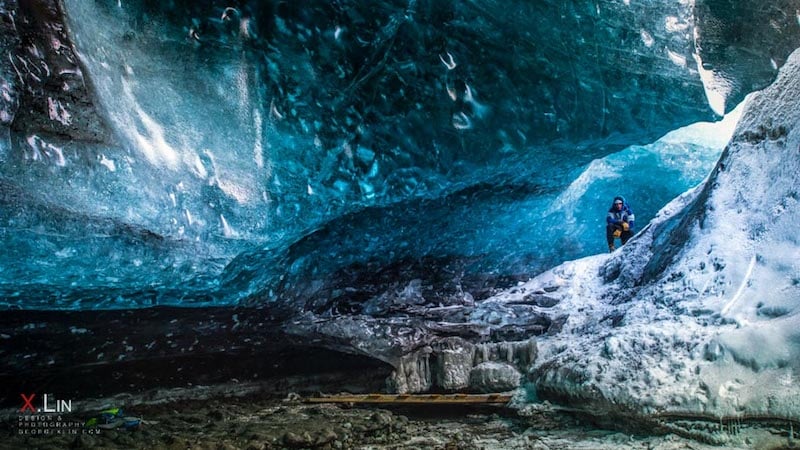
If there is only one way for me to describe Iceland, it would be “Monumental Scale Shock”. The country really borders on the extreme. The entire country’s population of 320,137 (as of 2012) is less than one half of Boston’s and two-thirds of everyone lives in the capital, Reykjavik. It’s north of NYC by almost all of Canada, but it is warmer by about ten degrees in the winter. And 85% of the country is on renewable energy (Volcanic and Water) as compared to the 13.2% for the US.
Although the summer is generally the more popular season to visit Iceland, my girlfriend and I decided to go this past holiday season so we can leave sunny California and freeze our butts off while enjoying the natural sights of Iceland that can only be seen during the winter months — among them, ice caves and auroras.
Like auroras, the “crystal caves” that form within the Icelandic glaciers provide an experience that is different each season and time and, to see them in their best light, you have to get somewhat lucky with respect to timing. This is because every Autumn, specialized local guides search for and discover new “crystal caves” within the glaciers on the south side of Iceland. Sometimes the caves are very beautiful and majestic, while others are less so.
Because they are ever-changing, the same caves can never be accessed in two consecutive winters. It’s up to the guide’s discretion to determine which cave you’ll visit, depending on the weather conditions and accessibility that particular day.
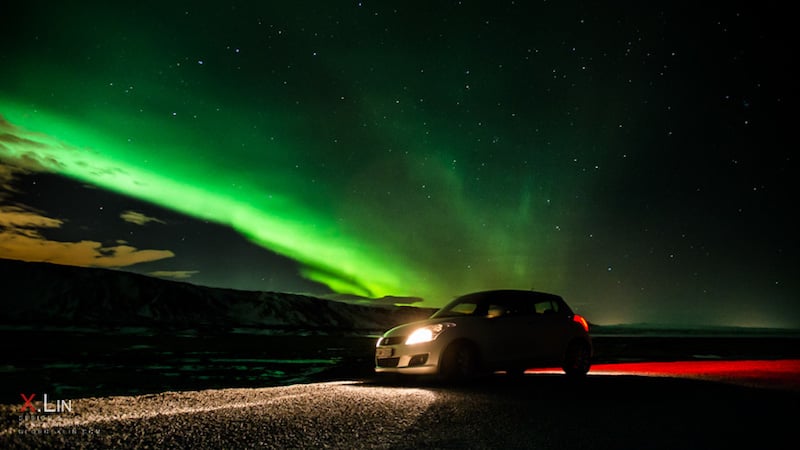
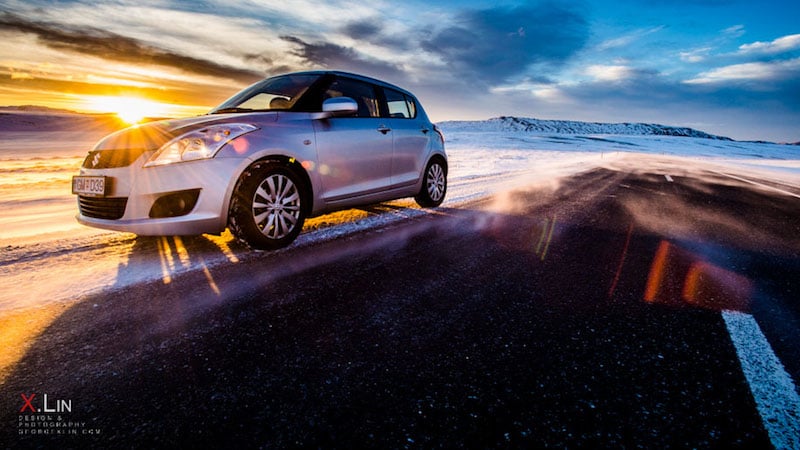
My girlfriend had seen pictures online of mesmerizing ice caves from previous winters, and she convinced me that we have to take our chances and booked a group tour with Local Guide of Vatnajokull, a family run and operated business.
After leaving Reykjaik (West coast of Iceland) at 6am, we drove in the dark towards Vatnajokull National Park on the East coast of Iceland. Sunrise was typically at 11am and sun sets around 4pm. To best utilize daylight for sightseeing, we spent most of our time driving in the dark. Once in a while, we did managed to catch glimpses of the Aurora, but it was mostly cloudy that week.
We arrived at our meeting place in a gas station at the arranged meeting time of 12:30pm. Our guides, Helen and her brother, informed us that for the first time this season, the Crystal Cave of Vatnajokull was accessible given the favorable weather conditions. Previous weeks had been plagued with snow and rain creating unfavorable driving conditions as well as a river that was 4 feet deep and had rapid currents. We were lucky to be there just in time.
When we heard that we would be visiting the “Crystal Cave,” we got really excited because this name was reminiscent of the same cave (from previous winters) that we had seen amazing pictures of online. She went on to explain that this cave was the most beautiful cave they had discovered this season, and that it was somewhat similar to the original “Crystal Cave” that had been discovered a few years ago.
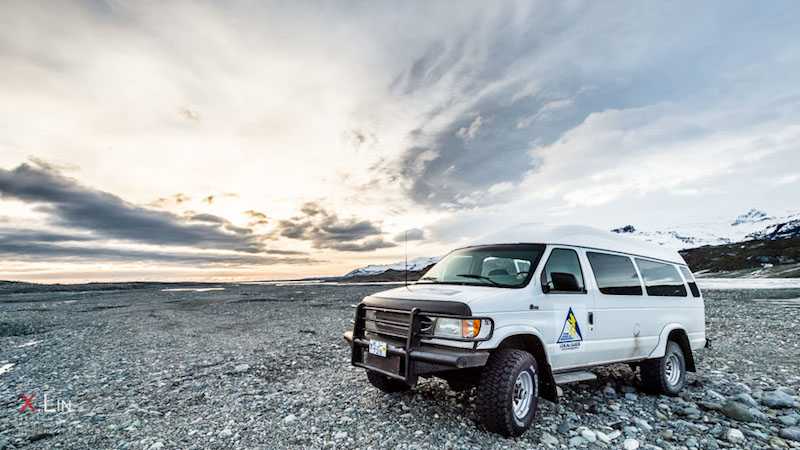
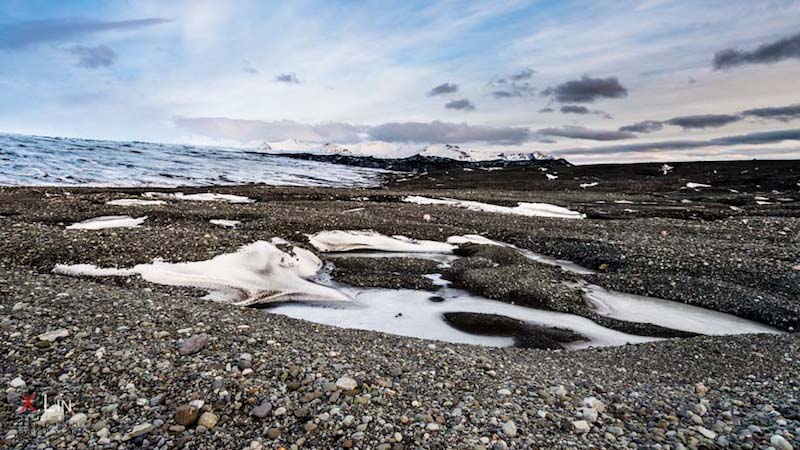
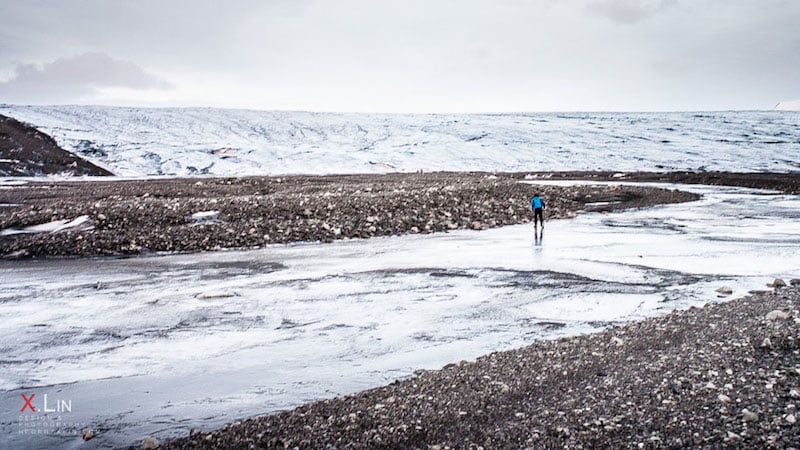
For the next one and a half hours, Helen drove us across rugged landscape and an icy river in her 4×4 van and got us within 1,000 feet of the entrance, where we geared up with waterproof trousers, crampons, and harness while hiding from the 50mph winds behind the van.
We cross a few more frozen rivers by foot and made it to the base of the entrance where we hiked up a 50ft hill covered in 28-inches of snow. Upon reaching the top, we descended 30ft down a sliver into the glacier cave. We then hooked our harness to a rope and crossed a 25-inch deep river with deceivingly fast currents and arrived at what I perceived to be a frosted cathedral.
During all this, our guide told us to put our cameras away unless we wanted to crack our lens, but I had a good filter on my lens and I was willing to test the versatility of my OM-D E-M5. The results are some of the photos you see here, painfully taken while hiking to the cave under freezing conditions, high winds, and unstable grounds.
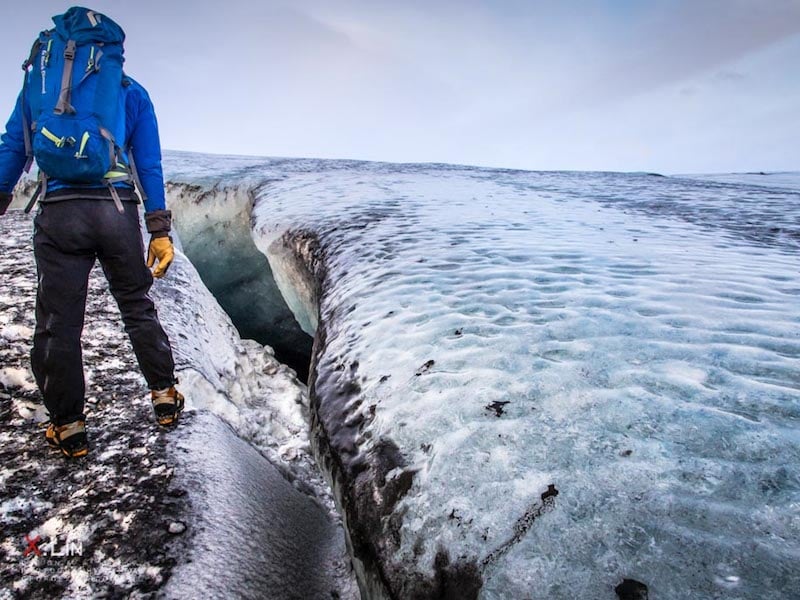
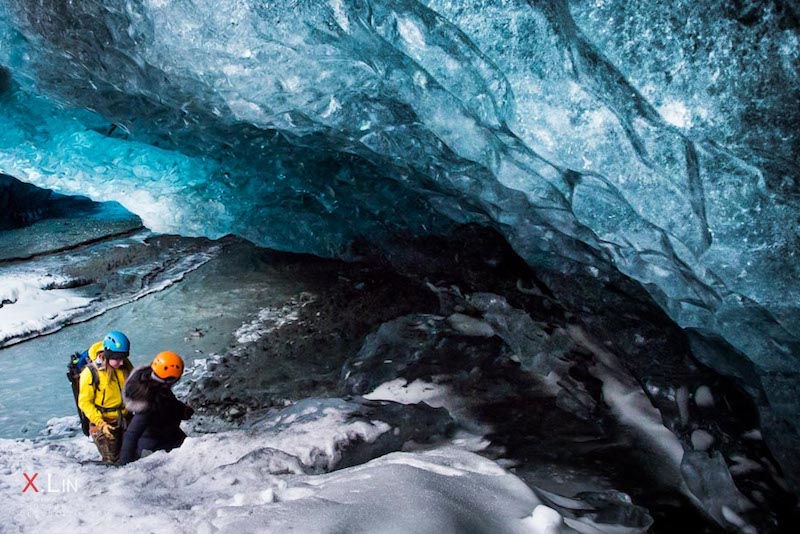
This tour was recommended for serious photographers only, and was a great way to meet other visitors with the same aspirations of capturing unique pictures of Iceland’s amazing scenery. But as it turned out we fought each other for the perfect shot, and because of the limited size of the cave and rapidly decreasing light, everyone was trying to get in front so no one would be in their frame.
Luckily I saw this opportunity to use these challenges to include people in a few of my photos as it gives it a sense of scale; and then, after 30 to 40 minutes of photographing, I decided to just stop and enjoy where I was.
I can’t describe how beautiful everything was. The level of translucency, reflection and refraction of light inside the cave was nothing like I’ve ever seen. The color of each surface varies based on the amount of sunlight received from above. Also, different parts of the glacier had different densities, so colors would vary quite a bit even on the same wall. It was definitely a unique experience.


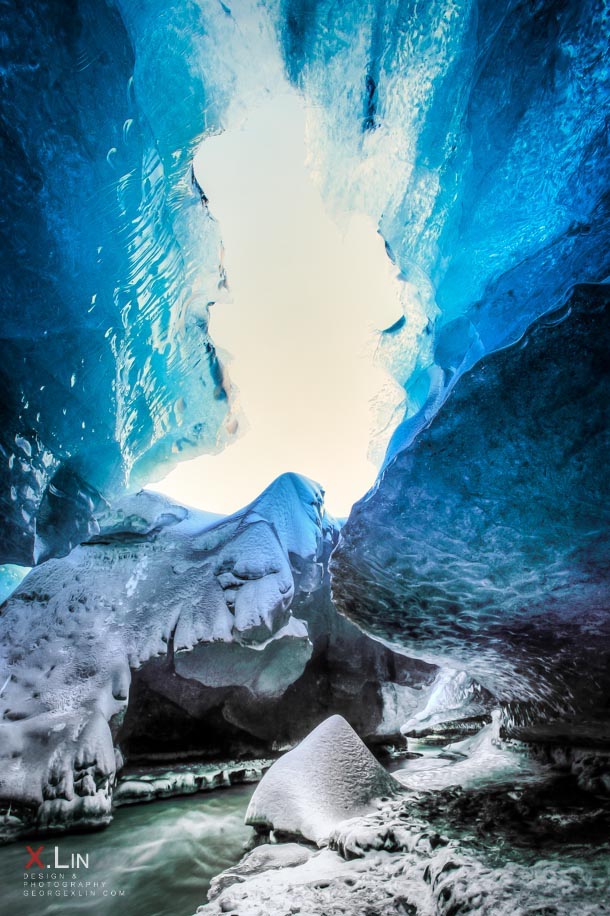
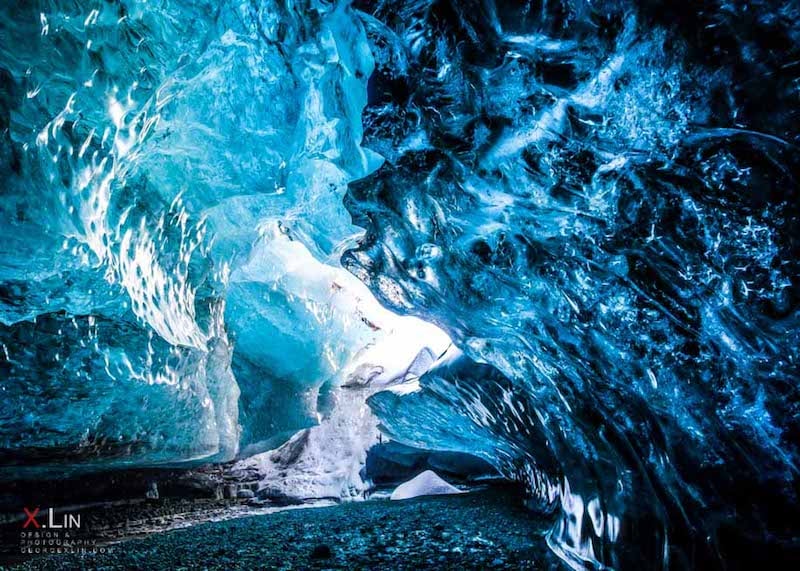
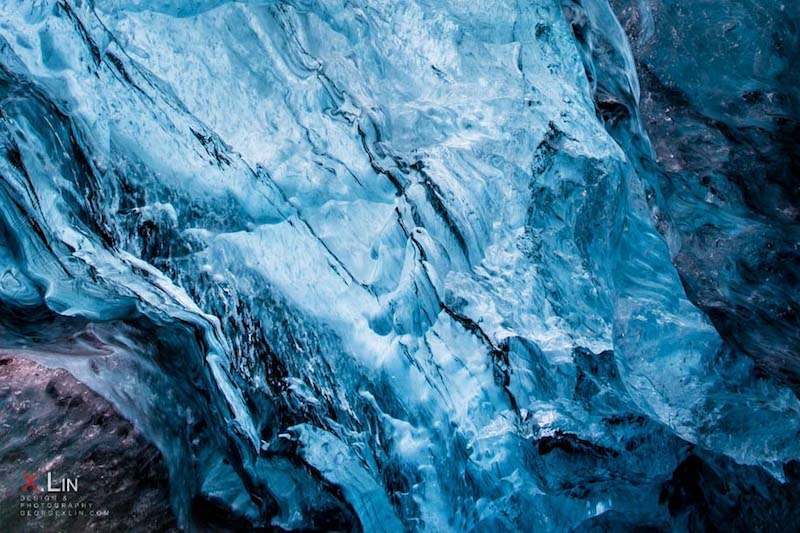
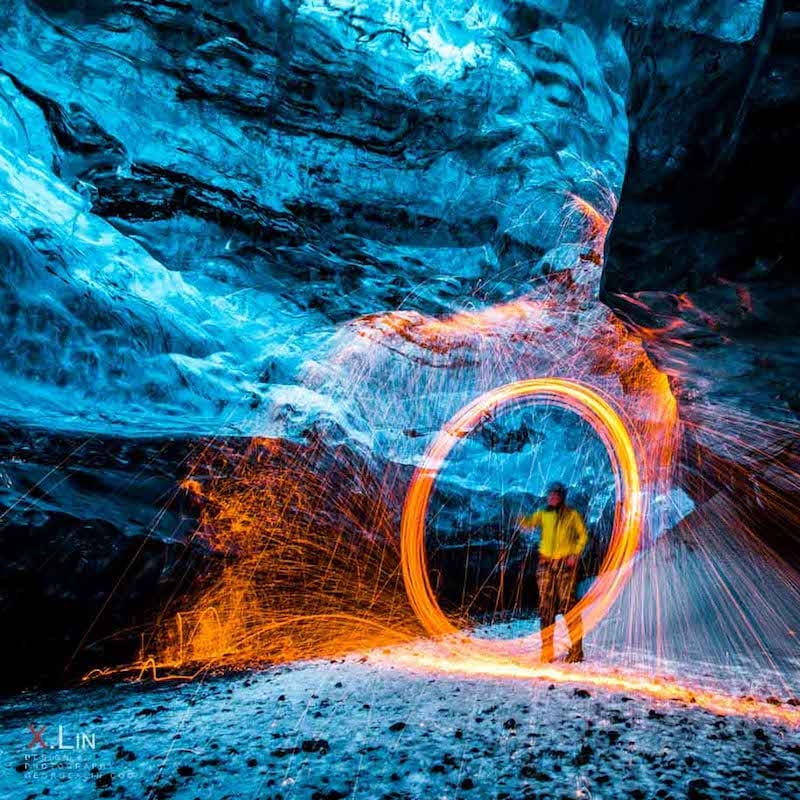
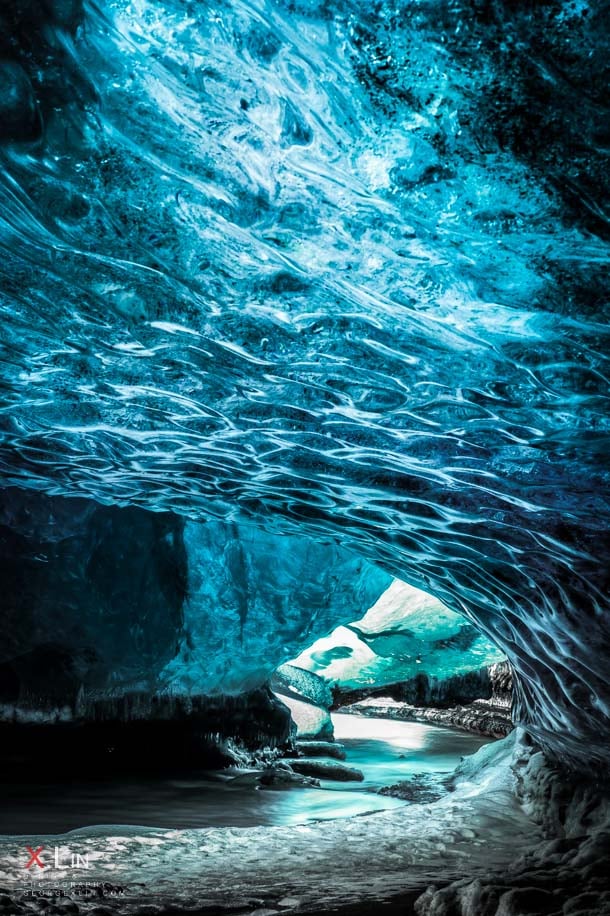
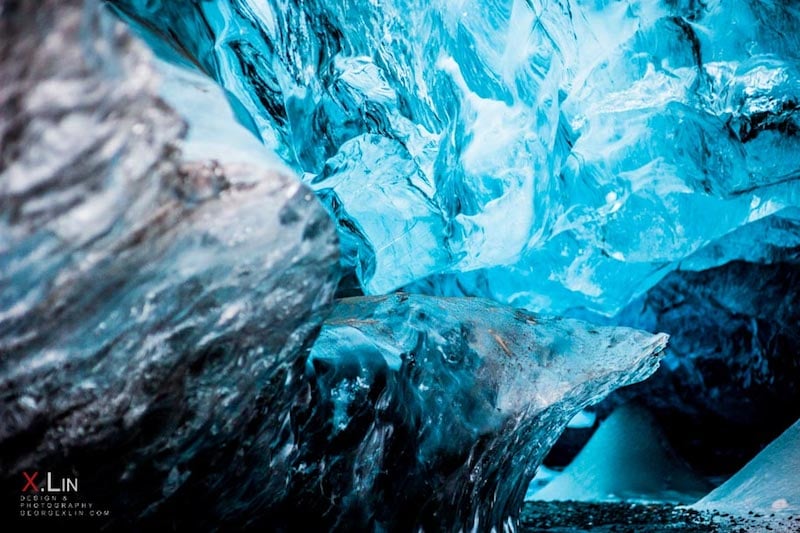
After an hour in the cave, it was time to go, and I have to say, I had a great time. Because of my relaxed attitude toward photography, I managed make some new friends on this tour and capture some amazing pictures. This trip has been eye-opening for me. Although we saw plenty in our 4 short days in Iceland, we know we absolutely must return again in the future.
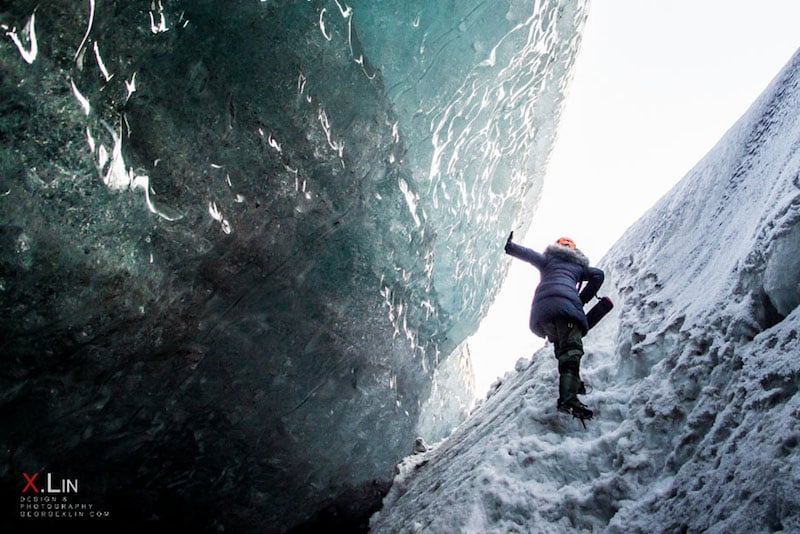
About the author: George X. Lin is an Architectural Designer and used photography throughout his decade in school to make ends meet. He shoots mainly architecture, but uses his understanding of spatial and tectonic qualities to frame photos for engagements, portraitures and weddings. He acquired his first camera, the Olympus C 2040, when he was 16 and eventually and still shoot film mainly on the seagull Tlr and the Nikon n6006. You can find his work here.